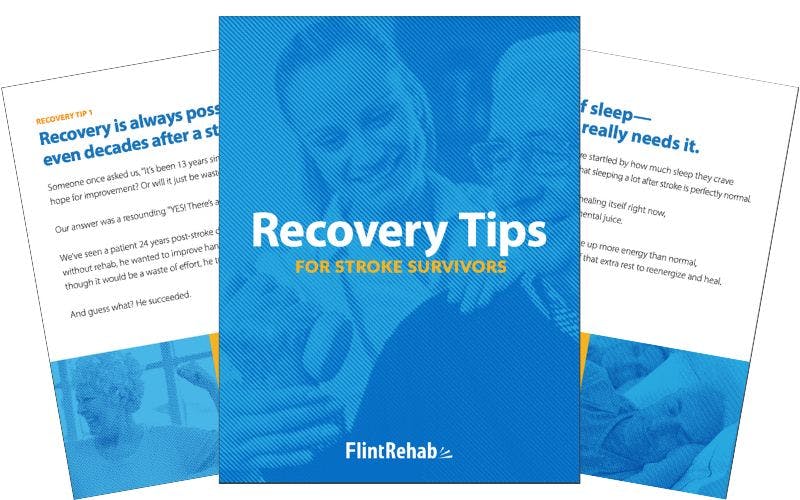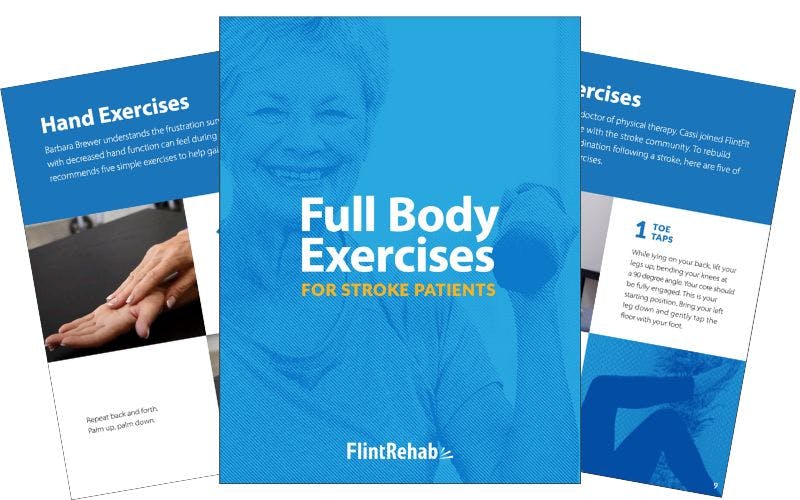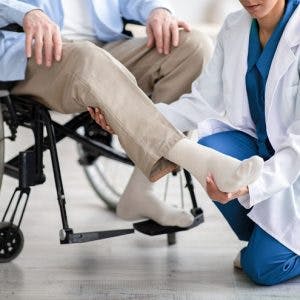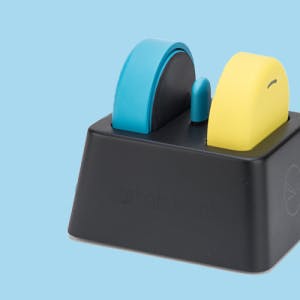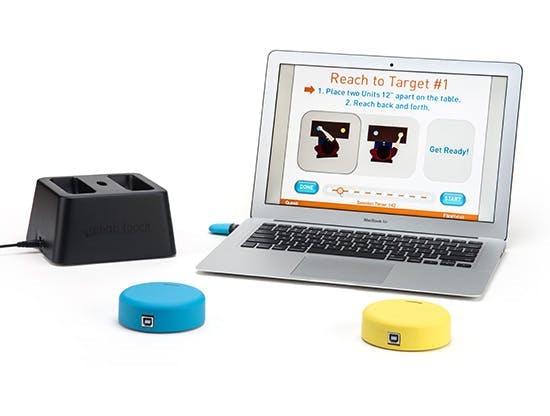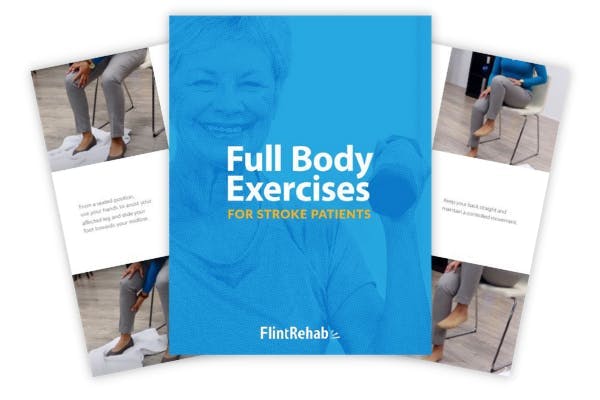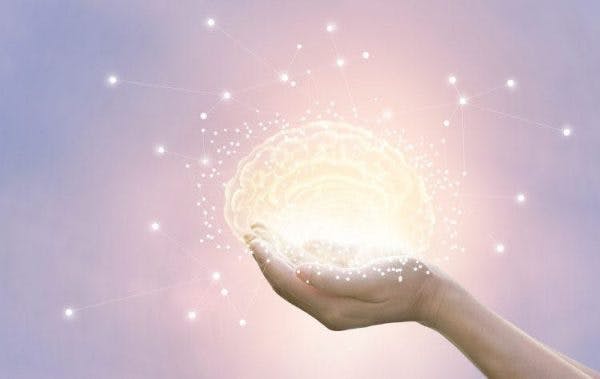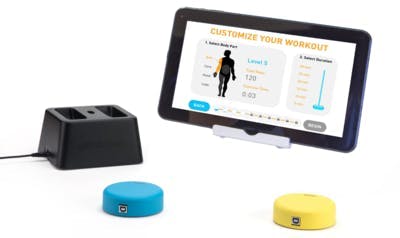Hemiparesis is a term used to describe weakness on one side of the body. It is a secondary effect of injury to the central nervous system due to stroke, traumatic brain injury, or other neurological injury. This weakness often involves the arm and leg but can also greatly impact other areas of the body, such as the core or face. As you can imagine, this weakness can negatively affect a survivor’s activities of daily living and overall independence.
Thankfully, hemiparesis can be addressed with intensive therapy and survivors can regain strength and function in the affected side of the body. Treatment for hemiparesis involves engaging the central nervous system’s natural ability to rewire and heal itself. In this article, we will review the causes of hemiparesis and discuss the general recovery process and treatment options.
Table of Contents
- Causes of Hemiparesis
- Treatment for Hemiparesis
- Therapy Options
- Additional Treatment Strategies
- Recovery Timeline
Causes of Hemiparesis
Hemiparesis is most commonly caused by a stroke. When a stroke occurs, the supply of blood in the brain becomes disrupted, which causes cell death and damage to brain tissue. This can happen due to an ischemic or hemorrhagic stroke.
In an ischemic stroke, a blockage in a vessel prevents blood flow from reaching critical areas of the brain. In cases of hemorrhagic stroke, an artery bursts or ruptures. Consequently, bleeding in the brain and disrupted blood flow lead to tissue damage in the affected areas. This is why knowing the warning signs of stroke and getting timely medical attention are crucial.
When a stroke affects the areas of the brain responsible for movement, such as the motor cortex, it can result in issues with motor control and muscle function. This includes secondary effects such as hemiparesis or hemiplegia. The difference between hemiplegia and hemiparesis can sometimes feel confusing, but this largely depends on the severity of the motor impairment the survivor experiences.
Hemiparesis vs. Hemiplegia
Hemiparesis, which is the main topic in this article, involves weakness on one side of the body. On the other hand, hemiplegia involves paralysis on one side of the body and is considered more severe. Each hemisphere of the brain controls movement on the opposite side of the body. Therefore, hemiparesis typically affects the side of the body opposite to the side of the stroke.
For example, a left hemisphere stroke may cause right-sided hemiparesis while a right hemisphere stroke may cause left-sided hemiparesis. However, some strokes or brain injuries can cause muscle weakness on the same side as the injury, which is called ipsilateral hemiparesis. Additionally, a stroke can affect both sides of the brain or body. Every stroke is different and each survivor may experience different effects.
Hemiparesis is common among stroke survivors, with some studies reporting that almost eight out of every ten survivors experience it during the initial stages of recovery. This is because movement is a brain-wide function and is dependent on many areas of the brain working together. Not only does the motor cortex play a role in the ability to move, but other areas of the brain such as the cerebellum also contribute. As a result, it is common for a stroke to affect an area of the brain that contributes to movement.
Stroke is not the only cause of hemiparesis. The condition can also be caused by cerebral palsy, traumatic brain injury, or other diseases that affect the nervous system or brain such as cancers or tumors. These causes are less common but still prevalent.
Treatment for Hemiparesis
Hemiparesis occurs as a secondary effect of damage to the brain or central nervous system. Since so many activities of daily living rely on the use of the arms and legs, hemiparesis can have a major impact on a survivor’s quality of life and independence. Activities such as bathing, dressing, shopping, or navigating your home can seem impossible. Fortunately, the central nervous system can heal itself through the phenomenon of neuroplasticity. This is how neural pathways are created, reorganized, and strengthened.
Neuroplasticity occurs based on demand. In other words, the tasks that you practice most frequently are the neural pathways that will be the strongest. This is why everyday tasks like tying your shoes eventually become “thoughtless” or automatic. Since you’ve practiced this skill thousands of times, the neural pathways for that skill are very strong.
After a stroke, your brain uses this same mechanism to heal and relearn lost skills. When survivors are impacted by hemiparesis, neuroplasticity helps the brain create and strengthen new pathways that control movement. The stronger these pathways become, the more strength and coordination the individual will have with their affected side.
This is why rehabilitation is so important for stroke recovery. Rehabilitative therapies such as physical, occupational, and speech therapy all focus on neuroplasticity and are crucial for helping survivors regain movement. By performing high repetition of therapy exercises, your brain can relearn lost skills and become more efficient with these skills. This is incredibly important for regaining independence and the ability to accomplish daily activities.
Therapies Available for Hemiparesis
Therapy for hemiparesis falls under the category of neurorehabilitation, which aims to rehabilitate the nervous system. It’s important to know that hemiparesis recovery is a lengthy process and will require time and consistency. While there are ways to speed up stroke recovery, your recovery is dependent on your unique stroke and secondary effects. Results don’t happen overnight and every stroke recovery timeline will be different.
As we discussed earlier, neuroplasticity occurs based on frequency and consistency of practice. The more we practice a task, the better we get at it. This is why high repetition or “massed practice” is an essential ingredient in hemiparesis recovery. The frequent stimulation of the brain through rehabilitative exercises works to promote healing and the return of lost functions.
The best way to maximize your recovery after stroke is to work closely with your doctor and therapy team. They will be able to help you create a recovery plan that addresses your unique secondary effects, abilities, and goals after stroke. With that said, we will now review some effective, evidence-based therapies you may encounter on your journey to recover from hemiparesis.
Physical Therapy
During physical therapy, individuals are guided through specific exercises that help restore movement. A physical therapist understands how to prescribe exercises for survivors with hemiparesis that target their affected limbs with the right amount of challenge (not too easy, not too difficult).
Physical therapy exercises help retrain the affected limbs through repetitive practice. The more the individual exercises their affected side, the more neuroplasticity occurs in response. For many survivors, these exercises focus on increasing range of motion, strengthening the muscles, improving balance, and restoring gait (the ability to walk).
Occupational Therapy
Occupational therapy focuses on helping individuals increase their independence with the activities of daily living. These activities include things like dressing, bathing, and self-feeding. Occupational therapists help prescribe exercises that are functional and task-specific, such as lifting a cup and placing it back down. Additionally, they may suggest compensation techniques to help survivors easily navigate life changes, such as using cups with handles.
Compensation techniques help individuals with hemiparesis accomplish difficult tasks by using shortcuts. Although this does not necessarily help restore motor recovery, compensation is often necessary to carry out essential daily tasks effectively. When an individual continues to exercise their affected side regularly, they can maximize their chances of motor recovery after hemiparesis.
In addition to providing exercises and compensation techniques, occupational therapists can suggest other home modifications to improve safety. Furthermore, they are an excellent resource for survivors who may require a hand splint or arm brace to reduce spasticity or contractures.
Speech Therapy
Speech therapy is another valuable resource for many stroke survivors. Your speech therapists can help diagnose and treat facial weakness and speech difficulties that can negatively affect a survivor’s life after stroke. Additionally, speech therapists can work with survivors who have difficulty swallowing, which is referred to as dysphagia.
Additional Hemiparesis Treatment Strategies
In the previous section, we outlined the different therapies survivors will likely encounter as they recover from stroke and, more specifically, hemiparesis. However, formal inpatient and outpatient therapies are just a part of the whole rehabilitation picture. In this section, we will review some additional treatment strategies that are effective and beneficial for stroke survivors.
Home Exercise Programs
Depending on the frequency of your rehabilitation sessions, most therapists will provide you with a home exercise program to continue building upon the skills you’ve learned in therapy. It is essential to continue practicing these skills outside of therapy sessions to optimize neuroplasticity and functional recovery.
Most insurance plans cover a limited amount of therapy visits for individuals with neurological injuries. Once insurance stops covering therapy, individuals may see their therapist just once per week, if at all. This is where home exercise programs become even more important. These programs can help individuals continue to improve movement by practicing therapeutic exercises with high repetition at home.
To help individuals stay motivated at home, you can look for interactive, at-home therapy devices such as Flint Rehab’s FitMi. The FitMi turns regular rehab exercises into an engaging game. Individuals usually accomplish hundreds, if not thousands, of repetitions per exercise session, which helps incorporate massed practice at home.
Electrical Stimulation
Your therapist may suggest electrical stimulation as part of your therapy regimen. This treatment involves electrical currents that are applied to your muscles through pads on the skin. These electrical currents help stimulate movement on the weakened side and can help boost muscle activation.
For example, if an individual struggles with hand or wrist movement, a therapist can apply electrical stimulation (e-stim) to the muscles in the forearm. When stimulated, the muscles can contract to help flex or extend the wrist and fingers, depending on the placement. While e-stim can be used alone, it leads to greater improvement when combined with task-related training. Be sure to talk with your therapy team before trying electrical stimulation on your own.
Constraint-Induced Movement Therapy
Constraint-Induced Movement Therapy (CIMT) is a popular treatment for hemiparesis. It involves restraining your unaffected side while exercising your affected side for several hours a day. Although CIMT is most commonly used for arms and hands, it is becoming a more utilized treatment for affected lower extremities as well.
This therapy is aggressive in the volume of therapy required and can feel overwhelming at times. However, there is meaningful evidence supporting it for recovery of arm and hand function. Additionally, CIMT is a technique often used to avoid learned nonuse or to address left-side neglect.
Mirror Therapy
Another evidence-based treatment for hemiparesis is mirror therapy. During this therapy, a mirror is placed over the affected arm or leg. Then, the individual practices rehab exercises with their stronger arm or leg while watching the moving image in the mirror. This mirror image “tricks” the brain into thinking both limbs are moving, which helps spark neuroplasticity. In addition to hemiparesis, mirror therapy can be a great treatment strategy to address post-stroke pain.
Mental Practice
All the treatments for hemiparesis we’ve discussed so far involve active movement. Surprisingly, there’s another treatment available that requires no movement at all: mental practice. This involves mentally rehearsing specific activities to improve the performance of those activities. Although mental practice is a cognitive, not physical, treatment for hemiparesis, it helps activate neuroplasticity and trigger cortical changes.
Evidence shows that better results occur when mental practice is combined with other physically active therapies. For example, individuals with hemiparesis can spend time mentally rehearsing their exercises before performing them in physical therapy.
Botox
Spasticity involves tightness or spasms in the muscles after a neurological injury and affects around 25% of stroke survivors. When muscle stiffness from spasticity prevents individuals from participating in rehabilitative therapies, treating the spasticity with medications like Botox or baclofen can help.
Botox is a “nerve block” that blocks the nerve signals that cause muscles to contract. This injectable treatment generally provides relief for about 3 months, after which individuals can receive additional treatments. While the muscles are more relaxed, survivors with hemiparesis can maximize their therapy gains.
Although Botox will wear off, this treatment allows survivors to make greater improvements in range of motion and strength with less resistance from spasticity. Focusing on accomplishing massed practice of rehabilitation exercises during this time will help rewire the brain and address the root cause of hemiparesis.
Baclofen
Baclofen is another medication that helps relax the muscles and address spasticity. This muscle relaxant is used to treat spasticity after a wide range of neurological conditions, including stroke or traumatic brain injury. Similar to Botox, results can be temporary, but they offer a window of opportunity to pursue rehabilitation exercises.
As with Botox, improvements made while under the medication’s effects can carry over even when the medication wears off (thanks to neuroplasticity). However, Baclofen is not a medication that is injected. Rather, Baclofen can be taken by mouth or even administered from a surgically implanted pump.
Orthotics
The use of orthotics may be recommended to stabilize, support, or stretch muscles affected by hemiparesis after stroke. For example, an ankle-foot orthosis (AFO) may be used to support the muscles of the ankle if a survivor experiences foot drop. Similarly, a hand splint may be used to stretch the muscles of the wrist and fingers in an affected arm.
Ideally, orthotics should be used as a short-term solution in conjunction with dedicated rehabilitation exercises. As the affected movements improve and your muscles become stronger over time, the orthotic may no longer be needed. As with all treatments for hemiparesis, a combination of therapies usually works best. Talk to your doctor and therapy team to explore your options and decide which approaches are best for you.
How Long Does Hemiparesis Recovery Take?
Recovery from neurological injury is different for every person because every injury is different. Every person’s brain is wired differently, and each injury impacts different neural pathways. This makes recovery after every neurological injury unique for all survivors.
Since hemiparesis looks different in every individual, it can be challenging to predict recovery outcomes and timing. However, there are some general patterns that can help you understand what to expect during your stroke recovery journey.
After a stroke or brain injury, the brain enters a phase of heightened neuroplasticity as it attempts to rapidly heal from the injury. When this state slows down, it results in a “plateau” that many survivors are familiar with.
After a stroke or traumatic brain injury, the brain enters a phase of heightened neuroplasticity as it attempts to rapidly heal from the injury. This initial phase of heightened neuroplasticity can lead to fast recovery of functions, known as spontaneous recovery. Individuals with hemiparesis can make incredible gains during this time, especially when frequently participating in inpatient and outpatient therapy sessions.
Plateaus in Progress
When this heightened neuroplasticity slows down, it results in a “plateau” that many survivors are familiar with. This plateau in progress often occurs between the 3-to-6-month mark. Beyond the 3-to-6-month mark, recovery is still very achievable, even if results come more slowly. However, this is contingent on your consistency with your home therapy regimen.
When rehabilitation and home programs are ignored, survivors tend to remain at the same level of ability. However, when rehabilitation is consistently pursued, even after stopping for months or years, recovery can continue. Check out our stroke recovery timeline article to see videos from survivors at all stages of recovery who are improving because they are pursuing recovery at home.
Outlook
Hemiparesis occurs as a secondary effect of a neurological injury such as a stroke or traumatic brain injury. This weakness of one side of the body can make everyday activities very challenging, often leading to decreased independence. Fortunately, the brain can heal and repair itself through the process of neuroplasticity. This is how neural pathways are created, reorganized, and strengthened.
Through massed practice of targeted exercises and other rehabilitative therapies, individuals with hemiparesis can improve movement on their weakened side. Diligence with home therapy is important because neuroplasticity requires repetition and consistency to occur. The more consistent you are with your rehab exercises, the more improvement you will see in your overall function.
There are many treatment options available for survivors affected by hemiparesis. For this reason, it is vital to work closely with your doctor and therapy team to create a plan that addresses your unique needs. With time, you can work to regain independence and get back to doing the things you love most.


